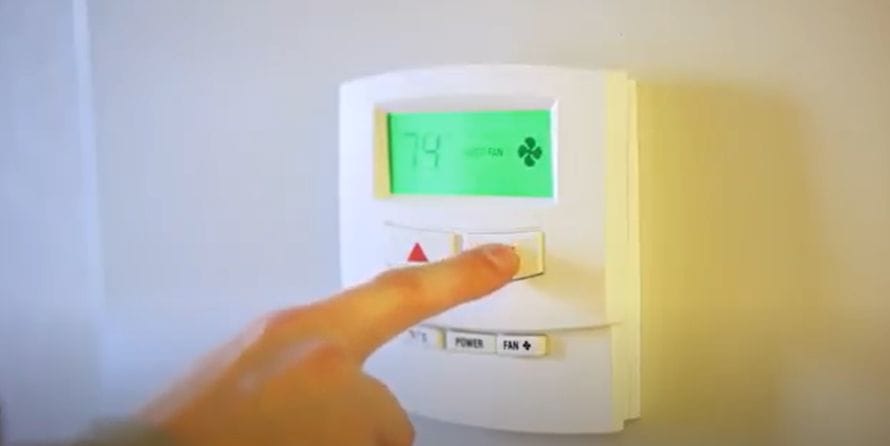 You want to get your HVAC system inspected yearly or conduct an inspection of it yourself. Make sure any filters are changed out, ducting is cleaned out, and everything is operating at peak performance. If you have a fireplace or wood stove, ensure the flue and chimney are swept and flowing properly and close the damper when not in use. The heating system you have, however old or new, is what you will be working with in this blog. We will not recommend any space or portable heaters in this blog because they won’t save you money over simply optimizing what you already have.
The easiest way to save through the winter is to turn your thermostat and water heater settings down. The Department of Energy estimates that you can save 1% for each degree of thermostat adjustment per 8 hours. Setting your thermostat 7-10 degrees lower in the winter for 8 hours per day will allow you to attain an annual savings of up to 10%. Turning down your water heater and insulating it, which we will cover later, will also save you money. Your hot water heater accounts for nearly 20% of your entire energy bill annually, so stop this blog right now and go turn that down. The optimal temperature for your hot water tank is 120 Fahrenheit or 48 Celsius. This is a comfortable, and sanitary temperature yet does not significantly increase your energy costs. You can measure the temperature of the water coming out of the faucet, adjust the temperature on the heater itself if you have a digital readout, or simply set it at a lower setting. If you find it is too cold after your initial adjustment, you can always turn it back up.
We lead with this because making your systems perform optimally and setting them lower will guarantee you between 10 and 20% savings on your utility bills. The average person hasn’t ever looked at the current settings on their water heater.
2) GET ENERGY EFFICIENT
You want to get your HVAC system inspected yearly or conduct an inspection of it yourself. Make sure any filters are changed out, ducting is cleaned out, and everything is operating at peak performance. If you have a fireplace or wood stove, ensure the flue and chimney are swept and flowing properly and close the damper when not in use. The heating system you have, however old or new, is what you will be working with in this blog. We will not recommend any space or portable heaters in this blog because they won’t save you money over simply optimizing what you already have.
The easiest way to save through the winter is to turn your thermostat and water heater settings down. The Department of Energy estimates that you can save 1% for each degree of thermostat adjustment per 8 hours. Setting your thermostat 7-10 degrees lower in the winter for 8 hours per day will allow you to attain an annual savings of up to 10%. Turning down your water heater and insulating it, which we will cover later, will also save you money. Your hot water heater accounts for nearly 20% of your entire energy bill annually, so stop this blog right now and go turn that down. The optimal temperature for your hot water tank is 120 Fahrenheit or 48 Celsius. This is a comfortable, and sanitary temperature yet does not significantly increase your energy costs. You can measure the temperature of the water coming out of the faucet, adjust the temperature on the heater itself if you have a digital readout, or simply set it at a lower setting. If you find it is too cold after your initial adjustment, you can always turn it back up.
We lead with this because making your systems perform optimally and setting them lower will guarantee you between 10 and 20% savings on your utility bills. The average person hasn’t ever looked at the current settings on their water heater.
2) GET ENERGY EFFICIENT
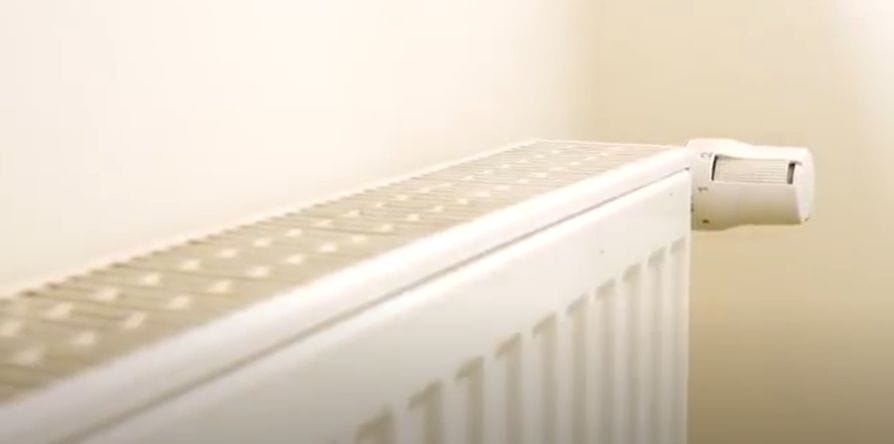 From bulbs to washers and dryers, you can keep energy costs lower by implementing more energy-efficient appliances and equipment. Switching all your bulbs to LED bulbs will make it so you don’t have to change bulbs for years, but they will also shave cents and dollars off your electricity bill each month. When you do your laundry, do it during off-peak hours. Bake bread or cookies in the morning and then crack the oven door to let the heat escape into the house.
Switch to a smart thermostat. These have become so well integrated and easy to install yourself that some power companies will give you a discount for simply installing one. After we installed one in our home last year, the next winter, our electricity bill was significantly lower. Never again will you leave the house and forget to set your thermostat to a lower temperature when you leave home. Additionally, with a smart thermostat, you can just log in to it on your smartphone and set it to a temperature where only your furry pets will be comfortable.
Put your holiday lights or lights you sometimes forget to turn off on a timer or a smart plug. This will allow you to turn them off even when you are not home. Trust us. We have Christmas lights that plug into an outside socket. It’s much easier to turn them off when it’s raining with a voice command from inside my warm and dry home than it is to venture out in the cold rain. Leverage technology to become more energy efficient in your daily life. These efficiencies may only save you a few cents or dollars here and there, but that can add up to huge savings over time.
3) LAYER UP
From bulbs to washers and dryers, you can keep energy costs lower by implementing more energy-efficient appliances and equipment. Switching all your bulbs to LED bulbs will make it so you don’t have to change bulbs for years, but they will also shave cents and dollars off your electricity bill each month. When you do your laundry, do it during off-peak hours. Bake bread or cookies in the morning and then crack the oven door to let the heat escape into the house.
Switch to a smart thermostat. These have become so well integrated and easy to install yourself that some power companies will give you a discount for simply installing one. After we installed one in our home last year, the next winter, our electricity bill was significantly lower. Never again will you leave the house and forget to set your thermostat to a lower temperature when you leave home. Additionally, with a smart thermostat, you can just log in to it on your smartphone and set it to a temperature where only your furry pets will be comfortable.
Put your holiday lights or lights you sometimes forget to turn off on a timer or a smart plug. This will allow you to turn them off even when you are not home. Trust us. We have Christmas lights that plug into an outside socket. It’s much easier to turn them off when it’s raining with a voice command from inside my warm and dry home than it is to venture out in the cold rain. Leverage technology to become more energy efficient in your daily life. These efficiencies may only save you a few cents or dollars here and there, but that can add up to huge savings over time.
3) LAYER UP
 We have been to people’s houses during the winter, where we thought it was freezing cold inside. It certainly was cold, but it was my fault for not dressing appropriately for the micro-climate of their home. Don’t just wear that ugly Christmas sweater for the party, but put it on like Mr. Rogers when you get home from work or wake up in the morning. Get that cozy bathrobe for the season and some long johns, thermal, or silk underwear. Layer your clothes when you go out, but also do it at home. Wear a nightcap or other comfortable hat in your home. Preserve your heat, even after you lower the thermostat. Socks with tread will keep your feet warm, even on hardwood floors. And, if you have hardwood floors, a throw rug is a layer of insulation for your room. If directly below your floor is the basement, insulate the basement ceiling, thereby protecting the floor from the chill of the space below.
You can also wear a scarf and fingerless gloves when it comes to your clothing. Whatever is comfortable for you. We know some people cannot stand to wear layers indoors, but even a plush robe can make a world of difference.
4) FIX YOUR LEAKS
We have been to people’s houses during the winter, where we thought it was freezing cold inside. It certainly was cold, but it was my fault for not dressing appropriately for the micro-climate of their home. Don’t just wear that ugly Christmas sweater for the party, but put it on like Mr. Rogers when you get home from work or wake up in the morning. Get that cozy bathrobe for the season and some long johns, thermal, or silk underwear. Layer your clothes when you go out, but also do it at home. Wear a nightcap or other comfortable hat in your home. Preserve your heat, even after you lower the thermostat. Socks with tread will keep your feet warm, even on hardwood floors. And, if you have hardwood floors, a throw rug is a layer of insulation for your room. If directly below your floor is the basement, insulate the basement ceiling, thereby protecting the floor from the chill of the space below.
You can also wear a scarf and fingerless gloves when it comes to your clothing. Whatever is comfortable for you. We know some people cannot stand to wear layers indoors, but even a plush robe can make a world of difference.
4) FIX YOUR LEAKS
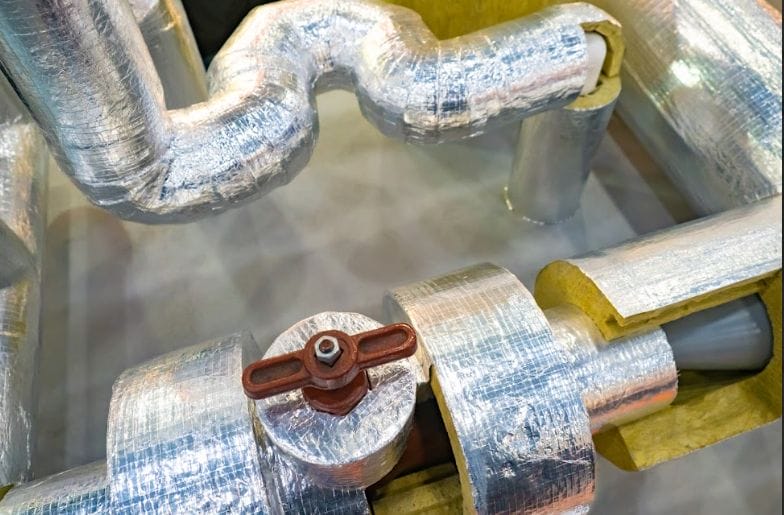 Using an infrared temperature gauge, you can leverage technology to locate drafts and air leaks in your home. These non-contact digital thermometers are convenient when preparing for summer, winter, or just cooking in the kitchen, so you will be glad you got one. Point its laser around windows, doors, and walls to understand your cold spots and where they are coming from. Use it to figure out where the heat is flowing or why it isn’t getting to where you want it to be. Another way to determine drafts in the house is to light a candle. If the flame flickers and the smoke moves off in a specific direction near windows or doors, it is a good indicator of a draft. Sometimes just locking down and clasping down a window can create a tighter seal.
Even small spaces under doors can bring a flood of cold air into a room or house. Indoor weather stripping, seal foam tape, and under-door draft stoppers can all be purchased for just a few dollars, but they will save you tens or hundreds of dollars over a whole winter if you can fix leaks and drafts with them. A hole the size of a one-inch door undercut will allow airflow of about 60 cubic feet per minute. By that calculation, a ten-foot square room could completely exchange the warm air inside with the cold air outside in just 13 minutes.
It isn’t just the outside doors and windows that can make it challenging to keep your home warm. If you have colder and warmer areas of your house, they are constantly trying to exchange their air, and the temperature will drop. Your heater will work extra hard. Close off the HVAC vents and insulate under the doors of any rooms you rarely or never use. Make sure the vents you do rely upon are open and unobstructed. Having a draft stop under your bedroom door can keep the warm air in your bedroom while you sleep, even as the other rooms get very chilly.
When it comes to windows, make sure you open the curtains and let the sun in during the day but keep them closed once the sun goes down. Even a few extra degrees can help.
5) INSULATE
Using an infrared temperature gauge, you can leverage technology to locate drafts and air leaks in your home. These non-contact digital thermometers are convenient when preparing for summer, winter, or just cooking in the kitchen, so you will be glad you got one. Point its laser around windows, doors, and walls to understand your cold spots and where they are coming from. Use it to figure out where the heat is flowing or why it isn’t getting to where you want it to be. Another way to determine drafts in the house is to light a candle. If the flame flickers and the smoke moves off in a specific direction near windows or doors, it is a good indicator of a draft. Sometimes just locking down and clasping down a window can create a tighter seal.
Even small spaces under doors can bring a flood of cold air into a room or house. Indoor weather stripping, seal foam tape, and under-door draft stoppers can all be purchased for just a few dollars, but they will save you tens or hundreds of dollars over a whole winter if you can fix leaks and drafts with them. A hole the size of a one-inch door undercut will allow airflow of about 60 cubic feet per minute. By that calculation, a ten-foot square room could completely exchange the warm air inside with the cold air outside in just 13 minutes.
It isn’t just the outside doors and windows that can make it challenging to keep your home warm. If you have colder and warmer areas of your house, they are constantly trying to exchange their air, and the temperature will drop. Your heater will work extra hard. Close off the HVAC vents and insulate under the doors of any rooms you rarely or never use. Make sure the vents you do rely upon are open and unobstructed. Having a draft stop under your bedroom door can keep the warm air in your bedroom while you sleep, even as the other rooms get very chilly.
When it comes to windows, make sure you open the curtains and let the sun in during the day but keep them closed once the sun goes down. Even a few extra degrees can help.
5) INSULATE
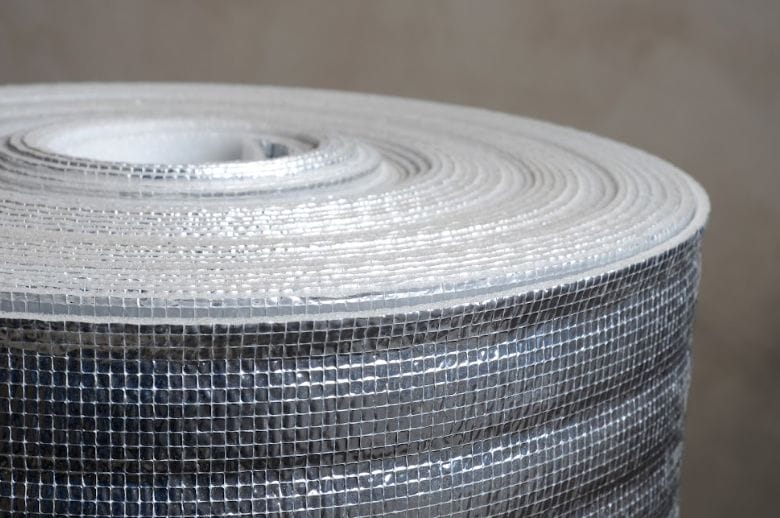 When you find a draft or note particular walls and cold areas, there are ways to insulate and heat them. If one of the walls receives a lot of sunlight, cutback bushes and trees that would prevent the sun’s warming rays from hitting the wall. Your home was built with insulation, but it can sometimes still be absent around window frames or in and around doors. Drilling a small hole in your cold locations and using a gap filler or spray foam can immediately impact your environment.
Foam core insulation sheets can quickly insulate garage and basement walls or even add a layer more to attic spaces. It comes in various sizes, so you can get a size that is right for you, even to cover windows entirely. Insulation isn’t just for the winter, by the way. You can also save on your cooling bill if you use it right and use it strategically. When saving money, you will also want to ensure you have an insulation blanket wrapped around your water heater. They make these specific for water heaters of all sizes. The less your water heater has to work to maintain water temperature, the more money you will save. Finally, insulate your pipes. Pipe insulation looks like a pool noodle with a slit down the center. It’s easy to install. It will protect your pipes from freezing and, depending upon the insulative rating, will lock in the warm temperatures of your warm water pipes.
6) CEILING FANS
When you find a draft or note particular walls and cold areas, there are ways to insulate and heat them. If one of the walls receives a lot of sunlight, cutback bushes and trees that would prevent the sun’s warming rays from hitting the wall. Your home was built with insulation, but it can sometimes still be absent around window frames or in and around doors. Drilling a small hole in your cold locations and using a gap filler or spray foam can immediately impact your environment.
Foam core insulation sheets can quickly insulate garage and basement walls or even add a layer more to attic spaces. It comes in various sizes, so you can get a size that is right for you, even to cover windows entirely. Insulation isn’t just for the winter, by the way. You can also save on your cooling bill if you use it right and use it strategically. When saving money, you will also want to ensure you have an insulation blanket wrapped around your water heater. They make these specific for water heaters of all sizes. The less your water heater has to work to maintain water temperature, the more money you will save. Finally, insulate your pipes. Pipe insulation looks like a pool noodle with a slit down the center. It’s easy to install. It will protect your pipes from freezing and, depending upon the insulative rating, will lock in the warm temperatures of your warm water pipes.
6) CEILING FANS
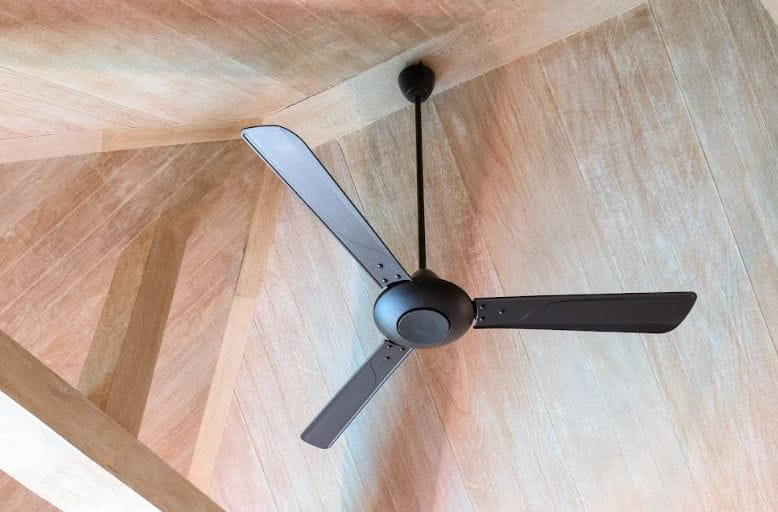 The physics here are simple. Warm air rises. A ceiling fan operating in a clockwise direction at its lowest speed will push the warm air collected on the ceiling back into the room. Recirculating the warm air will help your heating unit run less often. It may seem counter-intuitive to install a ceiling fan in a room for winter, but circulating that collected warm air hanging out on your ceiling is proven to shave around 10% off of heating bills. If you can’t install a ceiling fan, placing a small fan on top of shelving units or cabinets pointed at 45 degrees towards the ceiling and on its lowest setting will circulate the warm air back into the room. Keep the air circulating; you will need to use your furnace less and keep warmer in the process.
7) ELECTRIC BLANKET OR HEATING PAD
The physics here are simple. Warm air rises. A ceiling fan operating in a clockwise direction at its lowest speed will push the warm air collected on the ceiling back into the room. Recirculating the warm air will help your heating unit run less often. It may seem counter-intuitive to install a ceiling fan in a room for winter, but circulating that collected warm air hanging out on your ceiling is proven to shave around 10% off of heating bills. If you can’t install a ceiling fan, placing a small fan on top of shelving units or cabinets pointed at 45 degrees towards the ceiling and on its lowest setting will circulate the warm air back into the room. Keep the air circulating; you will need to use your furnace less and keep warmer in the process.
7) ELECTRIC BLANKET OR HEATING PAD
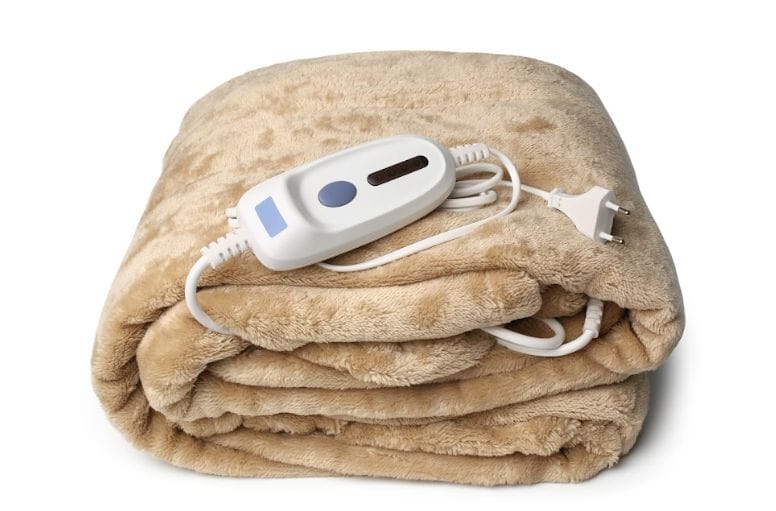 An electric blanket or heating pad can provide gentle warmth, making the surrounding temperature irrelevant. Whether you wrap yourself snuggly in the blanket or just sit on it, modern electric blankets come with multiple different heat settings and in many different materials. Modern electric blankets are also much safer than when they first came out, with automatic shutoff features and low voltage. The gentle heat of a heating blanket will make it so you don’t have to run your heater constantly because heated blankets concentrate their warmth around you. Because they are electric, though, they are going to have an impact on your electricity bill. The Department of Energy estimates the average electric blanket to use 400 watts, but various blankets on the market use just a quarter or less of that.
When it comes to blankets, wool is one of the warmest, but there are many different plush blankets made from many other materials. When you don’t want to turn the thermostat up, put a blanket down. It’s one of the oldest and easiest methods to keep warm. You can also use a personal heating pad next to you and under a blanket to stay even warmer. Using a classic hot water bottle can accomplish the same thing without electricity.
8) PUT A POT ON
An electric blanket or heating pad can provide gentle warmth, making the surrounding temperature irrelevant. Whether you wrap yourself snuggly in the blanket or just sit on it, modern electric blankets come with multiple different heat settings and in many different materials. Modern electric blankets are also much safer than when they first came out, with automatic shutoff features and low voltage. The gentle heat of a heating blanket will make it so you don’t have to run your heater constantly because heated blankets concentrate their warmth around you. Because they are electric, though, they are going to have an impact on your electricity bill. The Department of Energy estimates the average electric blanket to use 400 watts, but various blankets on the market use just a quarter or less of that.
When it comes to blankets, wool is one of the warmest, but there are many different plush blankets made from many other materials. When you don’t want to turn the thermostat up, put a blanket down. It’s one of the oldest and easiest methods to keep warm. You can also use a personal heating pad next to you and under a blanket to stay even warmer. Using a classic hot water bottle can accomplish the same thing without electricity.
8) PUT A POT ON
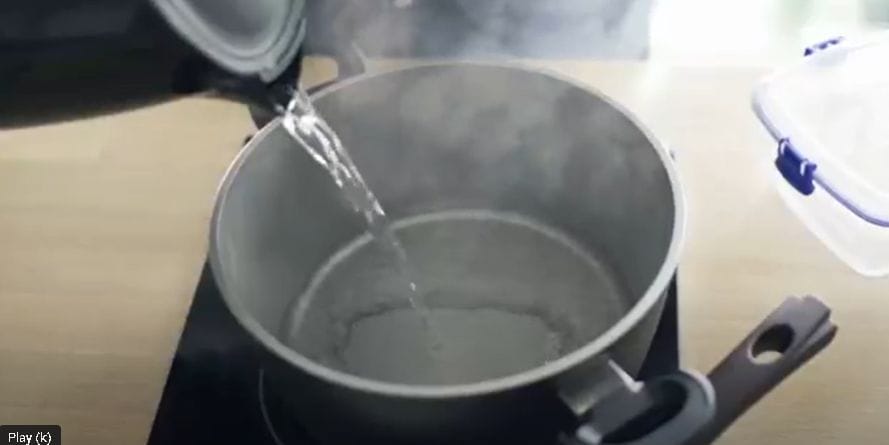 Humid air holds heat more efficiently than dry air. This means that an appropriate amount of humidity during the winter can make your home more comfortable and reduce the need for your furnace to replenish indoor heat continually. Putting a pot on the lowest setting on your stove with fragrant elements like cinnamon sticks, lemons, cloves, cardamom, ginger, turmeric, or other herbs and spices will create fragrant humidity in the air. It can also provide you with a steady supply of warming tea, and sipping warm liquids is a great way to keep your body’s thermostat running efficiently. If herbal teas aren’t your thing, consider it more of a potpourri, so you can still take advantage of the humidity to retain heat in your home.
You can sip on hot cocoa, warm cinnamon and turmeric milk, or even a hot toddy at night. One alcohol drink can have a skin-flushing effect, making you feel warmer. Any more than that, and you are probably dehydrating yourself more than you are helping, and hydration is also critical to keeping your internal thermostat functioning at maximum efficiency.
9) STOKE YOUR FURNACE
Humid air holds heat more efficiently than dry air. This means that an appropriate amount of humidity during the winter can make your home more comfortable and reduce the need for your furnace to replenish indoor heat continually. Putting a pot on the lowest setting on your stove with fragrant elements like cinnamon sticks, lemons, cloves, cardamom, ginger, turmeric, or other herbs and spices will create fragrant humidity in the air. It can also provide you with a steady supply of warming tea, and sipping warm liquids is a great way to keep your body’s thermostat running efficiently. If herbal teas aren’t your thing, consider it more of a potpourri, so you can still take advantage of the humidity to retain heat in your home.
You can sip on hot cocoa, warm cinnamon and turmeric milk, or even a hot toddy at night. One alcohol drink can have a skin-flushing effect, making you feel warmer. Any more than that, and you are probably dehydrating yourself more than you are helping, and hydration is also critical to keeping your internal thermostat functioning at maximum efficiency.
9) STOKE YOUR FURNACE
 In addition to sipping warm liquids, what you eat can also warm your body. Food is digested in part by bringing it to core temperature. If you eat cold food, your body’s heat energy is focused inward, leaving your skin feeling cold. The exception to this is, oddly enough, ice cream. Eating foods like ice cream that have high fat, complex-carbohydrate, and protein content will also heat the body up. Your body puts more energy into digesting the fat, increasing your body’s temperature. Summer’s lean, all-vegetable diets should be set aside in the fall. Some people take daily fish oil, medium-chain triglyceride (MCT) coconut oil, or even an ounce of olive oil to get a dose of healthy fats that will keep their bodies warm.
Putting on the stove a hearty beef stew and slow cooking it through the day will gently warm your home as well. Pull out a cookbook and make a stew, chicken soup, minestrone, or other easily digestible, warming food with good carbs and fat, and keep it warm throughout the day on your stovetop. Just thinking about it will probably keep you feeling warm. You can also start your day with slow-cooked cereal grains. Complex carbohydrates give your body just what it needs to regulate your internal temperature.
Conclusion
A few things are almost certain this winter. It’s going to be cold, and the cost of heating your home will be higher than it may have ever been before. Knowing these things to be true, you should be planning your winter prepping right now while it is still warm. These are just nine simple suggestions to keep costs down and the temperature up in your home. Some of these will also help you save money in the summer months. If you implement each of these suggestions, you will keep your costs down and still stay warm through the winter. If you have a power outage during winter, as has become a frequent occurrence for some in recent years, you will be glad you took these steps now.
As always, stay safe and warm.
LINKS
Electric Blanket: https://amzn.to/3xU3VFy
Heating Pad: https://amzn.to/3LQBCxy
Infrared Temperature Gauge: https://amzn.to/3DYymhl
Indoor Weather Stripping: https://amzn.to/3Ri84tE
Seal Foam Tape: https://amzn.to/3RjcsZh
Door Undercut Draft Stopper: https://amzn.to/3rdGdjA
Spray Insulation Foam: https://amzn.to/3fnIqq2
Gap & Crack Insulation: https://amzn.to/3Siu8FR
Smart Shield Insulation Rolls: https://amzn.to/3xWGNWP
Hot Water Heater Insulation: https://amzn.to/3xVNo3C
Pipe Insulation: https://amzn.to/3xWJoQB
Warm Pipe Insulation: https://amzn.to/3rdKxzs
Thermal Clothes: https://amzn.to/3raMnkv
Socks w/Tread: https://amzn.to/3RgGYmv
Smart Plug: https://amzn.to/3BPV7l1
Other tips:
Another method is large pieces of cardboard painted black on the outer, sun-facing side. With a quarter size hole at the top and a dime-sized hole at the bottom, the sun will heat the black surface and the air between. Cold air will flow in the bottom and out the top. There are many options for do-it-yourself solar window heaters. These can save you on your heating bill during the winter and provide warmth even when the power is out. Even in freezing temperatures, we leave at least one window cracked a 1/4 inch to allow some air to exchange. This will also help keep fireplace smoke moving up and out of the chimney.
In addition to sipping warm liquids, what you eat can also warm your body. Food is digested in part by bringing it to core temperature. If you eat cold food, your body’s heat energy is focused inward, leaving your skin feeling cold. The exception to this is, oddly enough, ice cream. Eating foods like ice cream that have high fat, complex-carbohydrate, and protein content will also heat the body up. Your body puts more energy into digesting the fat, increasing your body’s temperature. Summer’s lean, all-vegetable diets should be set aside in the fall. Some people take daily fish oil, medium-chain triglyceride (MCT) coconut oil, or even an ounce of olive oil to get a dose of healthy fats that will keep their bodies warm.
Putting on the stove a hearty beef stew and slow cooking it through the day will gently warm your home as well. Pull out a cookbook and make a stew, chicken soup, minestrone, or other easily digestible, warming food with good carbs and fat, and keep it warm throughout the day on your stovetop. Just thinking about it will probably keep you feeling warm. You can also start your day with slow-cooked cereal grains. Complex carbohydrates give your body just what it needs to regulate your internal temperature.
Conclusion
A few things are almost certain this winter. It’s going to be cold, and the cost of heating your home will be higher than it may have ever been before. Knowing these things to be true, you should be planning your winter prepping right now while it is still warm. These are just nine simple suggestions to keep costs down and the temperature up in your home. Some of these will also help you save money in the summer months. If you implement each of these suggestions, you will keep your costs down and still stay warm through the winter. If you have a power outage during winter, as has become a frequent occurrence for some in recent years, you will be glad you took these steps now.
As always, stay safe and warm.
LINKS
Electric Blanket: https://amzn.to/3xU3VFy
Heating Pad: https://amzn.to/3LQBCxy
Infrared Temperature Gauge: https://amzn.to/3DYymhl
Indoor Weather Stripping: https://amzn.to/3Ri84tE
Seal Foam Tape: https://amzn.to/3RjcsZh
Door Undercut Draft Stopper: https://amzn.to/3rdGdjA
Spray Insulation Foam: https://amzn.to/3fnIqq2
Gap & Crack Insulation: https://amzn.to/3Siu8FR
Smart Shield Insulation Rolls: https://amzn.to/3xWGNWP
Hot Water Heater Insulation: https://amzn.to/3xVNo3C
Pipe Insulation: https://amzn.to/3xWJoQB
Warm Pipe Insulation: https://amzn.to/3rdKxzs
Thermal Clothes: https://amzn.to/3raMnkv
Socks w/Tread: https://amzn.to/3RgGYmv
Smart Plug: https://amzn.to/3BPV7l1
Other tips:
Another method is large pieces of cardboard painted black on the outer, sun-facing side. With a quarter size hole at the top and a dime-sized hole at the bottom, the sun will heat the black surface and the air between. Cold air will flow in the bottom and out the top. There are many options for do-it-yourself solar window heaters. These can save you on your heating bill during the winter and provide warmth even when the power is out. Even in freezing temperatures, we leave at least one window cracked a 1/4 inch to allow some air to exchange. This will also help keep fireplace smoke moving up and out of the chimney. 
